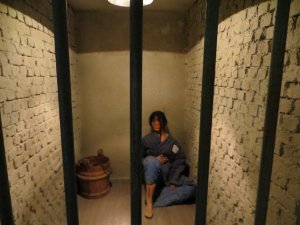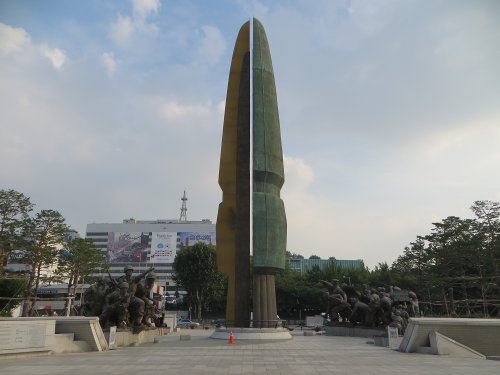War in the Korean Peninsula
The peninsula of Korea endured thirty five years of Japanese occupation in which many of their farmers were killed while fighting for their right to work and harvest the land, millions of people were oppressed and forced into intensive labor to meet the demands of the empire, young men were taken to war to fight for a cause that wasn’t theirs and never returned home, and hundreds of thousands of women were abducted to serve as sex slaves for the Japanese armed forces stationed in different countries in Asia during War World II. From 1910 to 1945, many independent activist and pro-democratic leaders were incarcerated, tortured, and killed by the Japanese regime. Korean people survived dark years of Japanese Imperialism and multiple forms of cultural genocide. With the same intensity in which Japan tried to extinguish Korea’s language and traditions, Korean people were able to resist and rebound.

Korea was liberated from Japan on August 15, 1945, when Japanese Emperor surrendered after the United States atomic bomb attacked the cities of Hiroshima and Nagasaki. However, this so call “liberation” was fake and the peninsula was then divided between north and south at the 38th parallel by the interests and power of the USSR and the USA. The nation, waiting for so long to be free of Japanese cruelty, was now segmented by the players of the Cold War. The lives of many Korean families were once again disrupted and in suspense.

The Korean War started after the unexpected attack of North Korea to South Korea on June 25, 1950. North Korea was supported by the communist governments and military supplies of the Soviet Union and China. South Korea was supportive by United Nations and United States. When the war broke out in Korea, the international society was outraged by the North Korea attack. Every part of the world including Asia, Africa, Europe, the Americas, and Oceania packed their military gear to fight for peace of the Republic of Korea answering the call to “protect the people they never met and the country they never knew”. Three years later and after many human losses, an armistice agreement was finally signed on July 27, 1953. Despite the unfinished war, South Korea continues to wish for a pacific reunification of the peninsula. It was said that unless a miracle would happen, it will take 100 years for South Korea to be restored after the war. However, unlike what was predicted, the nation was able to recuperate thanks to the compassion aid from the international community, great leadership, and tremendous efforts of the Korean people.
The story of Korea is very similar to the one Vietnam endured few years after. Both countries were colonized for decades by another empire and they were also divided by the political and economic interest in conflicts of communism and capitalism. Many people died and suffered as a consequence of these battles for control and territory. The difference between the Vietnam and Korean stories is the ending. Korea never had a “winner” or resolution to their war. The peninsula is still fragmented with wounds that have not healed, minds that have not forgotten, families that cannot reunify, and two systems that continue running and living under imminent tension. During our visit to the Museum of Korean War in Seoul, we felt very sad by what we perceived as an underline glorification of war in the way they tell the story. In reality a war is always a tragedy were everybody loses. No government or political ideologies could justify the separation of families and the death of innocent people. How different would our planet earth be if humans did not constantly think about power and control? We continue wishing for a world where the military is not needed to defend the right of every human to live in peace and liberty.
